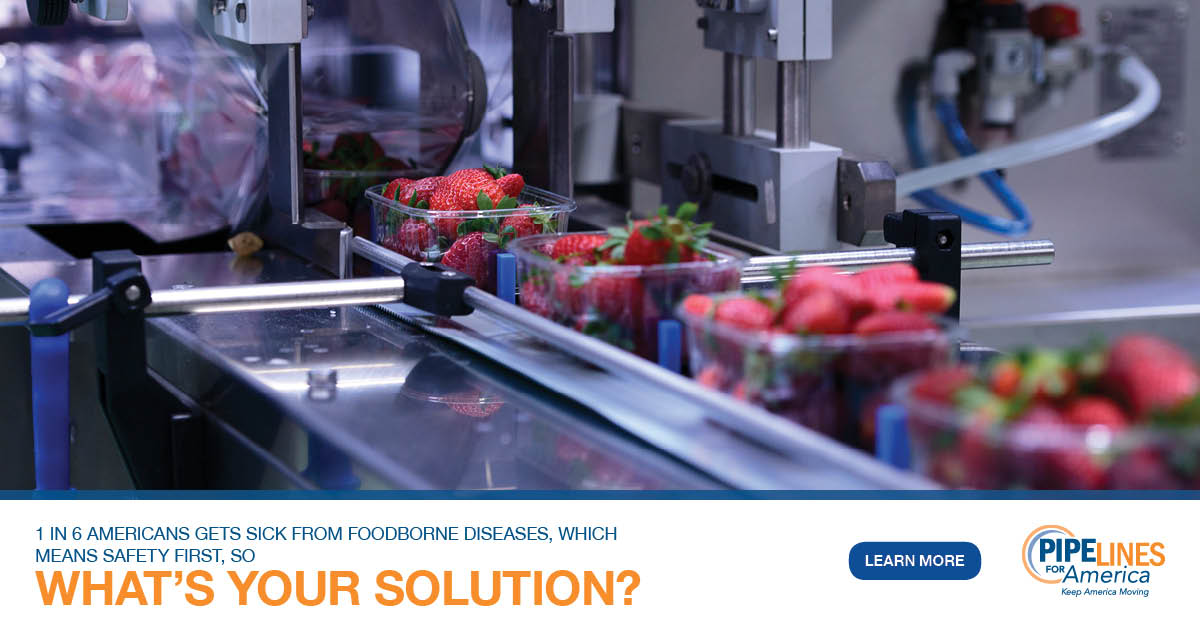Much of what we eat is packaged to keep it fresh until someone purchases it and takes it home to eat. This is why the work done at the U.S. Food and Drug Administration (FDA) to ensure the meals and snacks we eat every day are safe for us to consume is so important. With 328 million Americans to feed, this task is no small feat. The regulatory process around food safety is extensive, and much of it goes into how our food is packaged, and temperature-controlled, so it can be transported and stored safely on grocery store shelves across the country. When one, or both of these safety measures fails, that is usually when you see dramatic headlines in the news about someone getting sick, or worse, dying.
To ensure bacteria and bugs don’t penetrate our foods, company’s package deli meats, cereals, and snacks individually to help keep them fresh. Without proper packaging and temperature storage, we risk developing certain kinds of bacteria and mold in our favorite foods that can make us sick from eating them. Temperature damage is one of the leading risks to food safety. Temperature control is required by the FDA continuously from “farm to fork” in order to prevent or minimize the risk of bacteria and microbial growth. Much of what is used in refrigerated transportation is fueled from by-products of oil and gas through the petrochemical and cracking processes, which help keep the cooling units running.
Once that food has been purchased and comes home with us, much of the same food safety issues now become ours. You’ve seen the labels, “refrigerate after opening,” and many of us repackage our food once we get home too. That’s because many of us prep meals for ourselves and our families each week by preparing what we’ll use that week and saving what we don’t in the freezer. If you’re single, many people will apportion out individual servings to ensure there’s less waste and to ensure better savings when buying food. Those snack and storage baggies are in practically every household – and for good reason.
Polyethylene and polypropylene, the two most common plastics used for packaging food, are derived from oil and gas by-products. Roughly 5% of the U.S. petroleum consumption each year is earmarked for making plastics – that’s about 330 million barrels of oil a year, enough to fuel over 165 million roundtrip drives from New York City to Los Angeles. If we looked at some of the most common breakfast foods in America we quickly realize that many of our favorite items are kept fresh courtesy of plastic – cereal, bacon and sausage, bread, and even pre-made hard-boiled eggs all come wrapped in plastic. In some instances, there’s even more plastic on the inside to keep these products sealed.
We don’t just use these baggies for storage of our food at home, if you’ve ever been on a lengthy flight or road trip, they come in handy to pack snacks and treats. Maybe you forget to package something up before you left, then you’ve probably noticed that all these fun treats at a convenience store come packaged as well. From the plastic cups that your soda is poured into, to the fruit cup and sandwich, plastic has made it possible for us to eat even when we’re on the go.
Thanks to increased measures, and necessary regulations by the FDA that help keep Americans safe, we are able to purchase vegetables, meats, dairy, and snack products from all over the world with the knowledge that, in most cases, we are safe to consume what we’ve purchased.
Without the plastic packaging that keeps our food sealed from bugs and harmful bacteria, our trips to the grocery store might look a little different. So when we have conversations regarding America’s energy mix, expansion of renewables or offshore activities, we must take into consideration the luxuries we take for granted every day. Without the traditional energy we use every day, our grocery store shelves may look a bit different and the habits about how we consume our foods would have to change drastically too.

